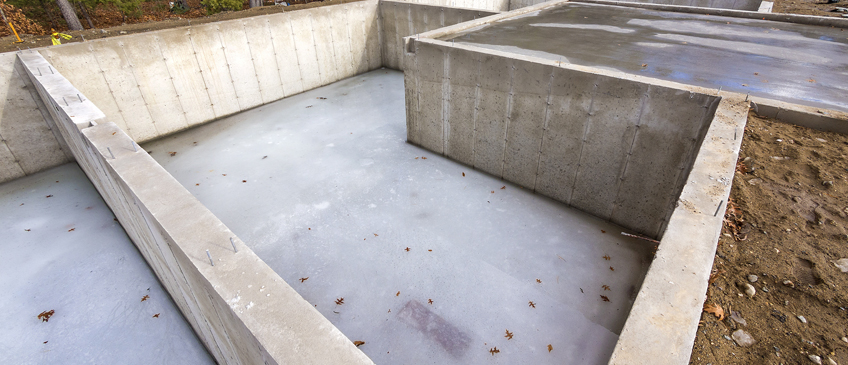Date: December 8, 2015
News - Concrete Restraint

As children, our parents urged us to use restraint, whether taking cookies from the cookie jar or shouting encouragement for our favorite sports team. It’s not uncommon for retail outlets to encourage parents to restrain their children during their visit to the store. But when it comes to young concrete and reducing cracking, restraint is not good. We want our young concrete to be free to go where it wants to go! Let’s explain.
One of the basic properties of ready mix concrete is it shrinks. It shrinks both due to the chemical reaction of hydration, but also as the extra water dries out of the concrete, just like your favorite jeans in the clothes drier. A large portion of this shrinkage happens in the first week after the concrete is placed. If you cast a slab 100 feet long on a perfectly smooth, frictionless base, a year later the slab would be 3/8 to ¾ inches shorter than 100 feet! That’s perfectly natural and predictable. Concrete is very strong in compression, but fairly weak if we pull on it in tension. During the first week or so, it is very, very weak in tension. Anything that restrains the slab from shrinking causes tension in the slab, and tension can lead to drying shrinkage cracking.
So what are examples of restraint? The first is where a slab butts up to a foundation wall or older concrete. The new concrete may not bond incredibly strongly to a foundation wall, but even a weak bond is enough to restrain the slab and induce tension. If possible, reduce the bond by using two layers of 15# roofing felt or 6 mil poly vertically on the foundation wall. Another source of restraint is a roughly graded base layer upon which the concrete is cast. The smoother the better. Tire ruts in the base fill with concrete and act like anchors to restrain the concrete. We often install dowel bars to mechanically connect old concrete to new. With the exception of very heavy industrial loads, dowels are usually not needed, and they cause more cracking due to restraint than the problems they may allegedly fix. If dowels are needed, consider using smooth dowel bars with a thick coat of grease or diamond shaped plates for load transfer. Avoid using rebar as dowels. Thickened edge footings or turn down footings in slabs are also common, but they prevent the slab from shrinking just like tire ruts. Although not as convenient or fast, consider separate footings isolated from slabs. If thickened edges are required, they should have reinforcing steel and control joint plan designed by an engineer to minimize restraint and cracking. Often, slabs are cast when block walls are up, the walls have doorway openings, and the slab is cast continuously from room to room. The doorways cause massive restraint in a slab like two big dogs pulling on opposite ends of a bone. Consider tooling joints in fresh concrete at every doorway opening.
Reducing restraint goes a long way towards limiting cracking, but it is only one small part of the strategy. Good quality concrete; reduced mix water in the concrete; properly spaced, sized, and timed control joints; and proper curing are some of the other spokes in the wheel to reducing cracking.
Hank Keiper, P.E.
The SEFA Group